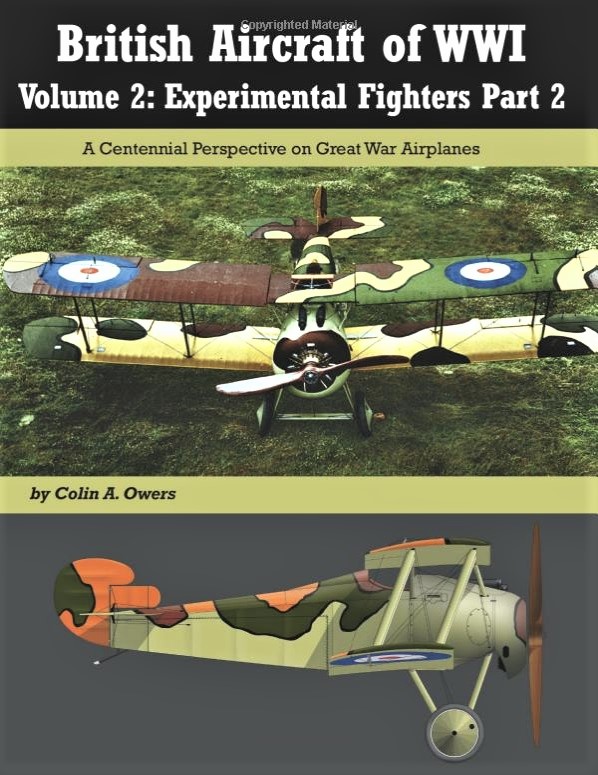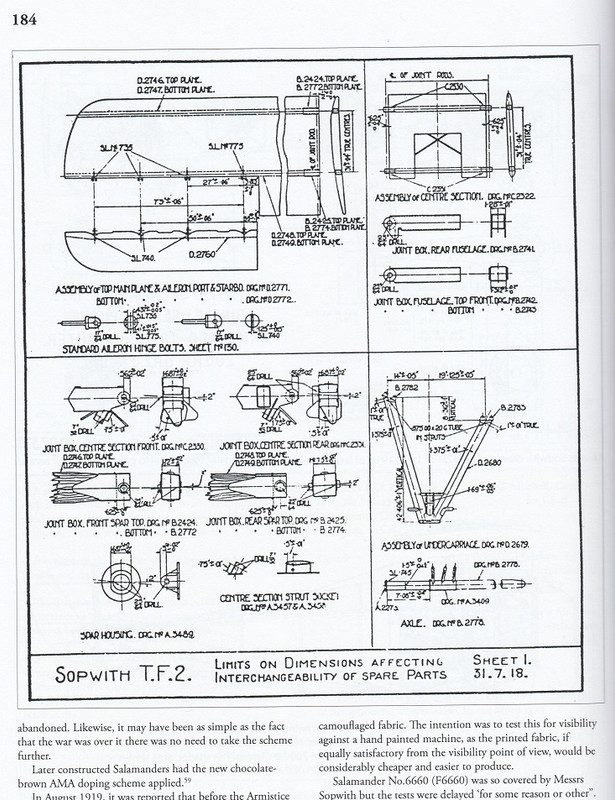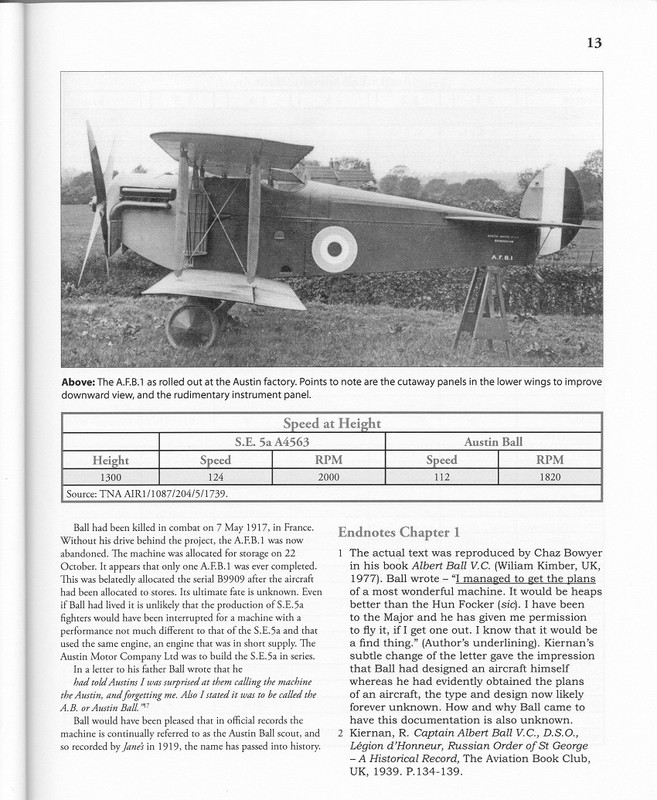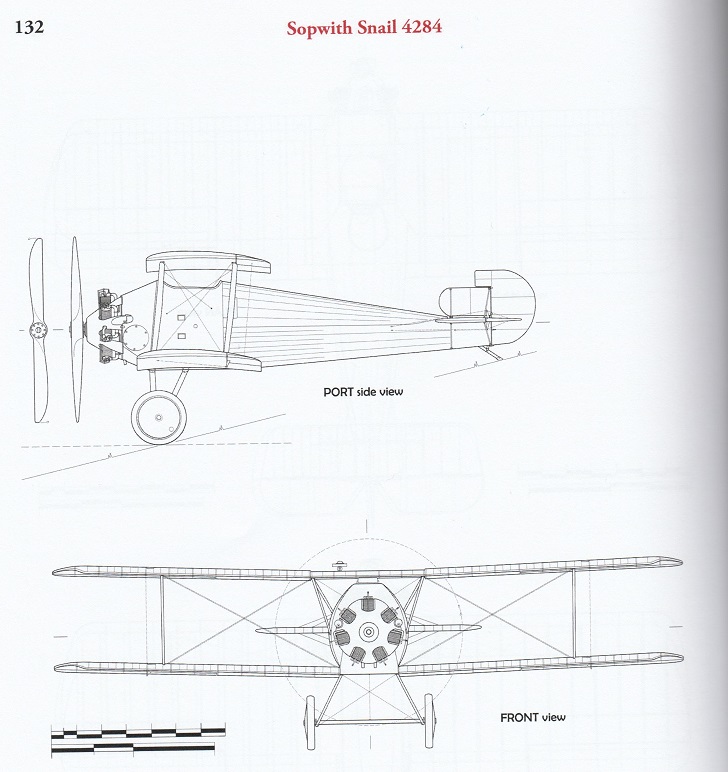« on: February 06, 2020, 02:39:38 PM »
British Aircraft Of WWI
Volume 2: Experimental Fighters Part 2
A Centennial Perspective on Great War Airplanes
 By Colin A. Owers
By Colin A. Owers
Reviewed by Erik W. Whipple
ISBN 978-1-935881-79-7
Format: 8 ½ x 11”. 202 pages with 133 photos of which 39 are in color. 19 color profiles, color plan view of Sopwith Salamander illustrating ground attack camouflage, 1/48th scale line drawings with side and plan views of the types described in the book. An impressive collection of vintage factory drawings and photographs displaying details and construction accompanied by numerous tables containing project and performance data.
©Aeronaut Books/Jack Herris
Color Profiles: Bob Pearson
Scale Line Drawings: Martin Digmayer
Cover Design: Aaron Weaver
Retail Price: $49.99USD
Available online at www.aeronautbooks.com and www.amazon.com
Table of Contents:
Preface & Acknowledgements
Ch.1: The Austin Ball A.F.B.1
Ch.2: The B.A.T. Fighters, F.K. 20 Shipplane, F.K. 22 and 23 Bantam
Ch.3: The Sopwith 8F1 Snail
Ch.4: The Sopwith T.F.1
Ch.5: The Sopwith T.F.2 Salamander
Comments:
This latest title in the “Centennial” series conforms to the superior standard of excellence that we've come to expect from Aeronaut Books. Well-illustrated with a logical layout, this comprehensive book is clearly the product of an extensive and incisive research effort undertaken by the author and his sources.
In my experience, most volumes written about Great War aircraft typically give a mere nod to prototypes and experimental designs, perhaps including a photograph or two, before moving on to more well known subjects.
To say that this book fills in some of the often broad gaps left behind by others would be a gross understatement.

Whether a completely new design or derived from an existing operational type, these aircraft were expected to introduce engineering advancements and capabilities in order to keep pace with an intensifying air combat arena, desperate urgencies created by everything from supply shortages to the demands of the grinding, static ground war and provide better army cooperation.
Some displayed great promise only to be cancelled in light of the armistice while others exhibited vexatious, expensive problems in design, development, and flight testing. To my eye, some of these aircraft appear to have informed certain design philosophies displayed in early interwar machines produced by firms the likes of Fairey and Gloster.


The author's writing reflects a vast knowledge inventory and healthy respect for the subjects. Beginning with a thorough treatment on the Austin Ball fighter- perhaps the earliest example of end user design in military aviation history- the reader will find detailed information that debunks myths and fully illustrates the plane's origins and development.
Treatment of the remaining types covered follows a similar patter wherein each is introduced and followed from service need and initial inspiration all the way through design, development, testing, employment, and ultimate cancellation.


Throughout the book, the mutual aspirations along with the inevitable disagreements and controversies between designers, manufacturers, the RFC, and procurement offices are described in detail where relevant. The initial designs, trials, modifications, newly-injected RFC/RAF requirements, and the results of flight testing are thoroughly described and documented in text, tables, photographs, and drawings.

This book is informative, enjoyable, and highly recommended for aviation enthusiasts, historians, artists, and modelers or any reader interested in the design and evolution of early aircraft.

Logged
Owner and Administrator of ww1aircraftmodels.com and forum.ww1aircraftmodels.com